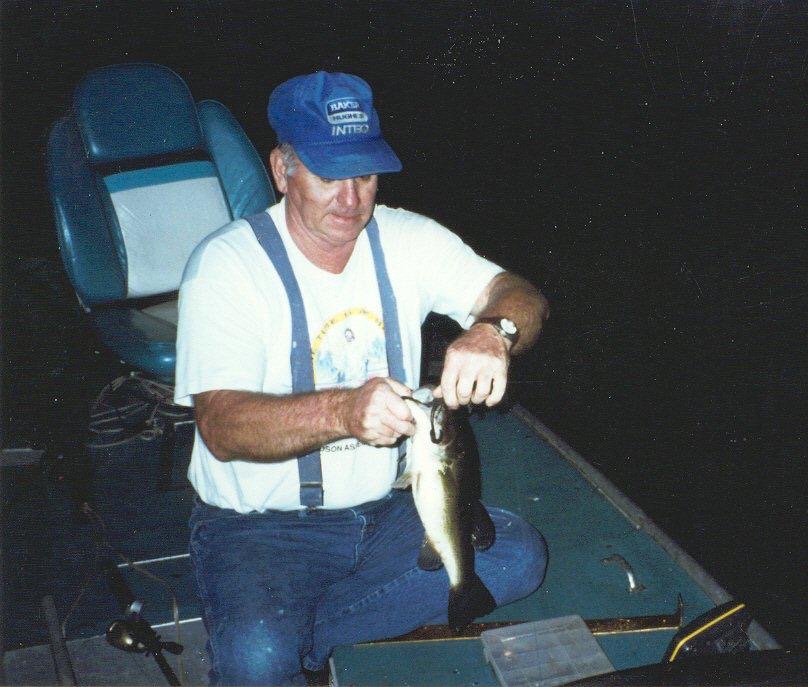Featured photo by Glynn Harris
After a couple of weeks of cooler than normal temperatures and showers every day or so, that period of comfort is gone. It’s August and things are heating up and drying up. As the old song says, “Summertime and the living is easy”. In our part of the world, most of the “easy living” takes place behind four walls under air conditioning. It’s just too hot and muggy for outdoors activities and we resolve to wait for the first cool days of fall before taking to the wood and waters again.
This can be tough on the bass fisherman who likes nothing more than practicing the art of “chunkin’ and windin’”. If you knew where you could catch some bass and be home before the sultry meltdown begins, would you be interested? I thought so.
Today, modern bass fishing has gone high tech. Lures, rods, reels, Live Scope have all revolutionized the sport. However, those anglers my age didn’t need all this fancy stuff to catch bass. Here’s how we did it “back in the day”.
On many of our area lakes, summer time is bass schooling time. Pick a lake, river or stream that has bass and chances are, you’ll find bass chasing shad somewhere on the water. You may have to wait until the sun gets up before the shad move to the upper column of the water, but if they’re there, you can bet the bass will be there as well.
Here’s how to begin a good day of summertime bass fishing…plan to be on the water at first light armed with a topwater lure – chugger, floater/diver or buzz bait. Cast next to brush, stumps, or grass and give the lure some enticing twitches. You won’t hit many spots before you’re likely to see an explosion around your lure as a largemouth sucks it in.
Once the sun starts up, shallow-feeding bass you fished for at dawn will have retreated, but their more active cousins will be out chasing shad. Any shad imitation will usually entice a bass shad into hitting. If this doesn’t work, tie a small jig, such as the Goin’ Jesse, three feet behind a chugger and give it a try. Bass will often jump all over the smaller lure.
Another excellent school bass lure is a smoke coloredgrub on a 1/8 ounce grub head. Cast to breaking schools or toss the lure where a school broke the surface a few minutes earlier. You’ll often nab a bigger bass waiting in ambush beneath the breaking schools. A shad look-alike fluttering down in front of his nose is often more than he can take.
If you can stand the heat, head for submerged cover in deeper water and fish a plastic worm. You’ll sometimes find bass hanging around such structure looking for an easy meal.
If you absolutely don’t want to fight the heat, sleep late; take care of honey-do’s around the house during the day and head for the lake at dusk. Take plenty of mosquito repellant and arm one rod with a dark colored plastic worm, another with a big black spinner with a pork or plastic trailer and another with a black buzz bait.
Ease along the shoreline and fish the black spinner first. If you hear surface feeding activity, try the buzz bait. When you approach a lighted boathouse, or you know where a shallow submerged hump is located near deep water, toss out the plastic worm or spinner. A slow retrieve works best at night since the fish have to first locate the lure and then home in on it.
Some of the largest bass of the year can be caught at night as heavyweights drop their guard under the cover of darkness for a late night snack.
Don’t let hot, steamy weather keep you from going after bass. During times like this, you have to do it on their terms. The dividends, though, are well worth the effort, and you don’t need all the fancy high tech equipment to do it.




